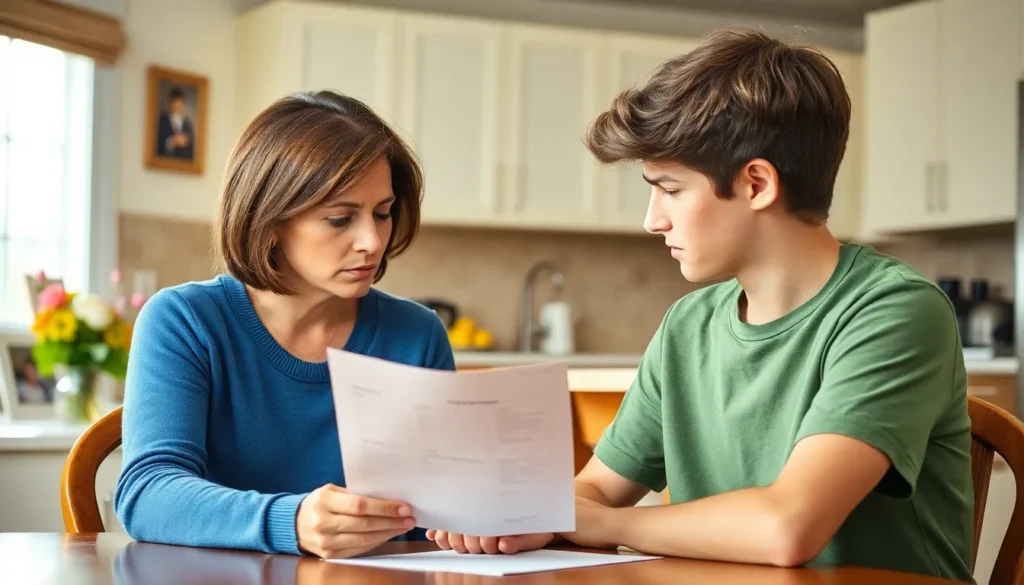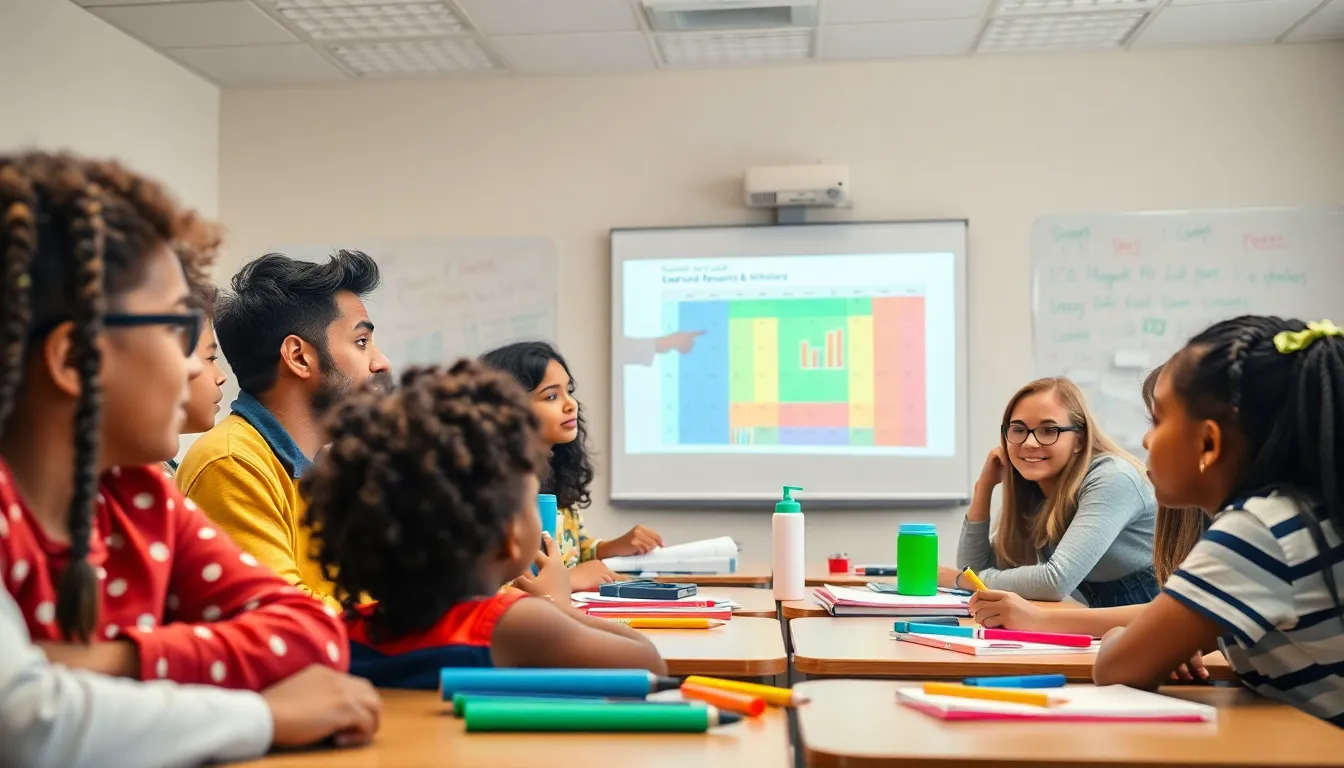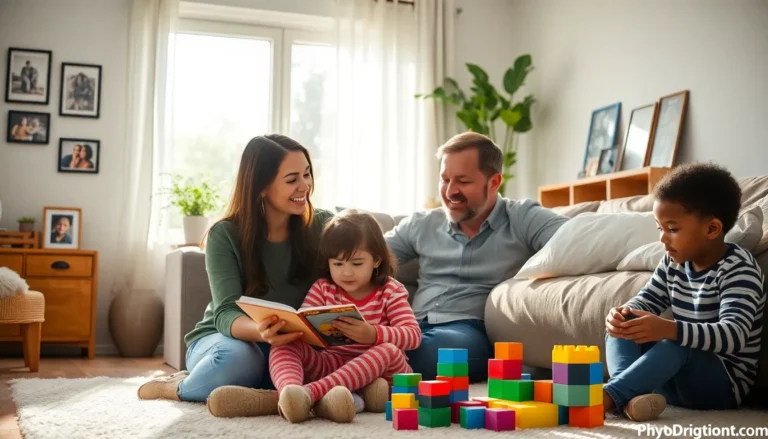When it comes to report cards, feedback can feel like a rollercoaster ride—thrilling highs and gut-wrenching lows. It’s that time of year when students nervously await their grades, and parents brace themselves for the inevitable “let’s talk” moment. But what if feedback could be more than just a score? What if it could spark motivation and ignite a passion for learning?
Imagine turning those numerical grades into a treasure map, guiding students toward academic success. With the right feedback, report cards can transform from dreaded documents into powerful tools for growth. It’s all about striking the right balance between honesty and encouragement. So buckle up as we explore how to make report card feedback not just informative but also a little fun—because who says education can’t have a sense of humor?
Table of Contents
ToggleUnderstanding Report Card Feedback
Report card feedback serves as a pivotal tool in the educational journey. It provides insights into student performance beyond mere grades.
Definition of Report Card Feedback
Report card feedback refers to comments and evaluations provided alongside grades on a student’s report card. Educators use this feedback to highlight strengths and identify areas needing improvement, fostering growth. Comments often include behavioral observations, participation levels, and specific achievements. This type of feedback is designed to inform both students and parents about progress, encouraging a constructive dialogue regarding academic development.
Importance in Education
Feedback on report cards holds significant importance in education, serving multiple functions. First, it helps identify what students grasp well, guiding future instruction. Second, constructive comments motivate students to enhance their skills, promoting a positive attitude towards learning. Third, such feedback fosters communication between parents and teachers, creating a collaborative approach to education. Enhanced understanding of performance can lead to tailored support, ensuring that both students and educators remain engaged in the learning process.
Types of Report Card Feedback
Report card feedback encompasses various forms of communication, aiding student development and offering insights to parents and educators. Understanding the distinct types enriches the feedback experience.
Qualitative Feedback
Qualitative feedback emphasizes comments and observations about a student’s performance. This type of feedback highlights strengths and provides suggestions for improvement. For instance, a teacher might note a student’s creativity in a project or suggest enhancing study habits. Recognizing individual learning styles and suggesting personalized strategies also fosters growth. Teachers often utilize specific examples to illustrate progress, making the feedback more relatable and actionable for students. This engaging approach encourages a positive response and motivates students to strive for improvement.
Quantitative Feedback
Quantitative feedback focuses on numerical scores and grades that represent student performance. These metrics, such as test scores and assignment grades, provide a straightforward assessment of academic achievement. For example, a student may receive a score of 85 on a math test, indicating proficiency in that subject. Alongside these numbers, comparisons to class averages or benchmarks can offer additional context. Understanding this data helps students identify where they excel and where they may need enhancement. Combining quantitative scores with qualitative insights creates a comprehensive overview of a student’s progress.
Strategies for Providing Effective Report Card Feedback
Effective report card feedback requires an understanding of both specificity and encouragement.
Specificity and Clarity
Specific feedback aids understanding. Mention exact subjects or skills where the student excels or struggles. Use distinct examples to illustrate points; saying “exceptional in math problem-solving” holds more value than vague praise. Clarity in comments helps parents and students grasp the purpose behind grades. Focus on actionable insights that guide improvement. Highlighting key areas makes it easier for students to plan their study habits effectively. Providing context for scores fosters a clearer picture of performance. When feedback is straightforward, it cultivates trust and transparency among educators, parents, and students.
Encouragement and Positive Reinforcement
Positive reinforcement drives motivation. Effective feedback should celebrate achievements, no matter how small. Commending improvements inspires further effort and resilience. Phrases like “great progress in reading” remind students of their capabilities. Constructive suggestions follow positive acknowledgment, framing challenges as opportunities for learning. Encouragement turns setbacks into stepping stones, making it easier for students to embrace growth. Share opportunities for further development while also acknowledging past successes. This balance fosters a safe environment for engagement and risk-taking in learning. When support goes hand-in-hand with feedback, it transforms the report card experience from a source of anxiety to a moment for celebration.
The Role of Parents in Report Card Feedback
Parents play a crucial role in engaging with report card feedback to foster student growth. Their involvement provides the necessary support for understanding academic performance.
Communicating with Teachers
Effective communication with teachers enhances the quality of report card feedback. Parents should initiate conversations, asking specific questions about their child’s strengths and areas for improvement. Open dialogues allow them to gain insights beyond numerical grades. Engaging with teachers facilitates a clearer understanding of expectations and academic goals. Establishing regular check-ins creates a partnership focused on student success, ensuring consistent progress and support.
Understanding Feedback
Understanding feedback demands parental attention to both qualitative and quantitative aspects. Parents should familiarize themselves with comments and scores, extracting meaningful insights. They benefit from recognizing strengths highlighted in qualitative feedback while also considering numeric values. Emphasizing the purpose behind grades helps parents discuss improvement strategies with their children. Interpreting feedback accurately equips parents to provide targeted support. Addressing specific subjects or skills in conversations boosts motivation and encourages continued effort. Balancing these elements shapes a constructive learning environment at home.
Conclusion
Report card feedback can transform the way students, parents, and teachers perceive academic performance. By embracing feedback as a valuable tool for growth rather than just a score, everyone can cultivate a more positive educational experience. This shift encourages open communication and collaboration between parents and teachers, ultimately benefiting the student.
Fostering a supportive environment where achievements are celebrated and areas for improvement are addressed can lead to lasting motivation. As students learn to view report cards as pathways to success, they’ll be more inclined to engage with their education. By prioritizing constructive feedback, the journey through academic challenges can become not just manageable but also enjoyable.







